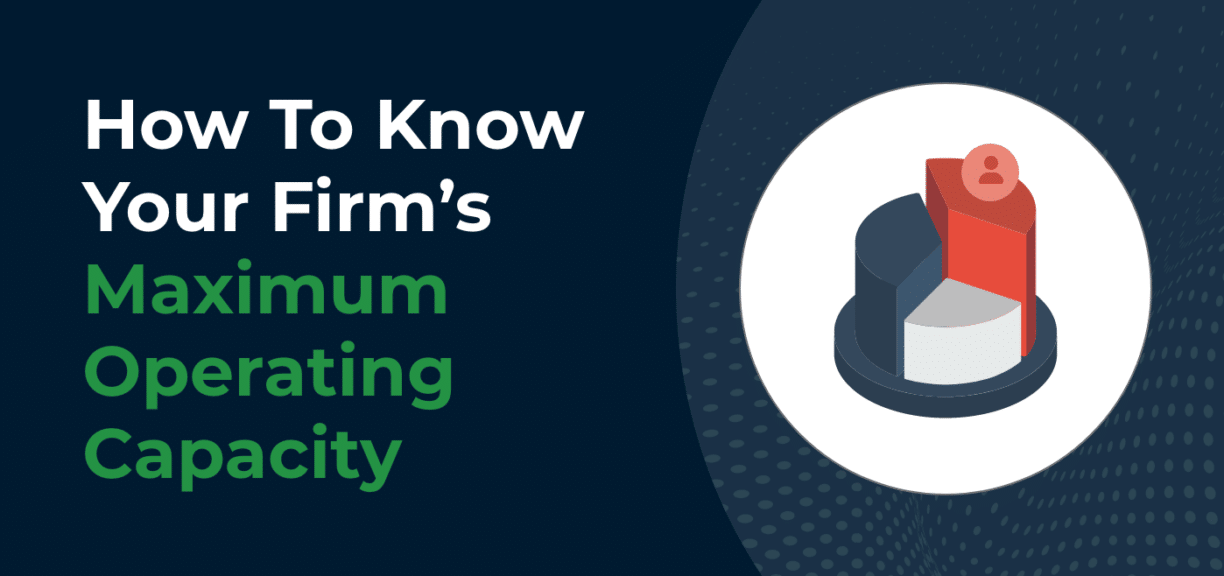How to Know Your Firm’s Maximum Operating Capacity
Author: Financial Cents
In this article
Running a company involves being aware of your full operating capacity—that is, the maximum output it can produce in a given period.
Your accounting workflow is not the only thing that affects how much your company earns. Knowing your capacity will help you determine the most strategic way to use your resources.
Here at Financial Cents, we want to see your firm succeed! That’s why we’ve written this article, where we’ll lay out several factors to consider when measuring capacity.
Operating Capacity: What Is the Firm’s Potential Output?
To calculate your potential output, figure out the number of units you can produce per hour in each stage of the process. Consider the staff and machinery you have and use the smallest number as your capacity.
For example, suppose your accountants provide a three-stage service. The first delivers 50 units per hour, the second delivers 100 units, and the third, 40 units. Your capacity is 40 units per hour.
To calculate your weekly capacity, multiply this by the number of hours you can maintain this rate per week.
What Is Your Downtime?
Factor in a reasonable amount of downtime when computing for your full capacity.
For instance, suppose a firm produces 1,000 units per hour if it’s running smoothly but requires half an hour of service every day. Those 30 minutes take away from its capacity.
Calculate the downtime and subtract it from the output to get the full capacity considering downtime.
In this example, 30/480 is 0.0625 downtime, which delivers 937.5 units at 1,000 – (1,000*0.0625).
Do You Need to Make New Purchases?
If your system has a bottleneck, it may be because of a slow or malfunctioning machine. To relive it, you might need to purchase new equipment.
If you have the resources, you can increase your capacity with a new purchase. Remember, you need to address bottlenecks first before adding capacity to other areas. If you don’t, the bottleneck will become worse and waste resources.
If you aren’t sure where the bottlenecks are, you can use workflow software with capacity management feature to track what happens in your firm.
Do You Need to Increase Manpower?
If your employees are producing your output in any stage, you must factor workforce capacity into your calculations.
This involves knowing the maximum an individual worker can produce in an hour and multiplying it by the number of workers you have and the number of hours they work during a given time frame.
For instance, if you have six quality control officers who can inspect eight machines per hour, you must multiply eight and six, which gives you 48. Then, multiply this figure by 40 (for the number of hours a week that a worker can be on duty).
In this example, the full workforce capacity is 1,920 machine inspections per week.
Have You Calculated Your Maximum Operating Capacity?
When calculating your maximum capacity, you must first determine your cycle time, or how long it takes to complete one unit of your product or service.
Then, take the total number of available work hours multiplied by the number of employees that can complete the work, and divide the product by your cycle time.
The quotient is the maximum capacity of your business.
When you have this figure, you can calculate the maximum revenue by multiplying the average price per unit by your maximum capacity.
Conclusion
Running a successful accounting or starting a bookkeeping business involves more than just strategizing about what direction it should take. You must know how you can reach your goals using the tools and resources you currently have.
Calculating your workforce’s capacity will help you gauge whether your company can go in the direction you want to take.
Hit all your deadlines and maximize your resources with Financial Cents. Our accounting practice management software keeps things from falling through the cracks and streamlines workflow automation.
Instantly download this blog article as a PDF
Download free workflow templates
Get all the checklist templates you need to streamline and scale your accounting firm!
Subscribe to Newsletter
We're talking high-value articles, expert interviews, actionable guides, and events.

The 7 Best Karbon Alternatives to Consider in 2024
There is a suitable practice management tool for every accounting firm. When it is the right firm, Karbon provides most of the…
Apr 16, 2024

The Top 8 TaxDome Alternatives for Your Accounting Firm
Practice management software, like TaxDome, should help firm owners manage their projects, clients, and staff to improve client service and stay profitable.…
Apr 08, 2024
